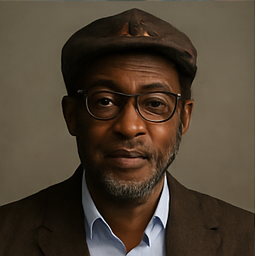Brilliant consultant Nina Kaiden Wright brokered some of Canada’s biggest arts sponsorship deals

Open this photo in gallery: Nina Kaiden Wright, right, and Nacia Miller. Ms. Wright died in Naples, Fla., on April 14 after a brief illness. She was 93.Supplied Nina Kaiden Wright arrived at Canada Trust headquarters one day in the late 1990s hoping to negotiate an investment in the arts. Chris Armstrong, the financial company’s newly appointed chief marketing officer, was intrigued but not ready to sign a deal. Ms. Wright “pitched me on some cultural ideas. I think it might have been ballet, it could have been the opera,” Mr. Armstrong says. Canada Trust did not have a major cultural component to its brand at that time. Nor was it actively looking for one. But it did have a foundation called Friends of the Environment which supported Earth-friendly causes. “I said to her, ‘Nina, if you can ever get an idea that blends [the arts] and Friends of the Environment and our focus on the environment, and put together something around that, maybe we’ll talk.’ And she said, ‘That‘s a good idea.’ She went away, and I didn’t expect to hear back from her. I thought it was impossible,” Mr. Armstrong says. But, 10 months later, Ms. Wright returned with a proposal. The Toronto Reference Library needed funds and was preparing to sell its storied collection of prints by 19th-century naturalist John J. Audubon. Ms. Wright proposed that Canada Trust buy the prints then donate them back to the library after sending them on tour to various big-city museums across Canada. The library would ultimately keep the art, and Canada Trust would gain national recognition for its support of an environmentally oriented artistic endeavour. “Imagine how knocked out I was,” Mr. Armstrong says. “Here was this woman who I’d sent away with this impossible task, and she nailed it.” Ms. Wright was the founder of the Toronto firm Arts and Communications Counselors. Through it, she developed the concept of strategic philanthropy – generating corporate financing for the arts in Canada. Ms. Wright died in Naples, Fla., on April 14 after a brief illness. She was 93. Lorraine Patterson, the associate director of sponsorship at the Stratford Festival, who was previously employed by Ms. Wright and considers her a mentor, says “she really invented corporate sponsorship in the arts as we know it in Canada.” Over nearly four decades, Ms. Wright was behind some of the biggest arts sponsorship deals in the country including Toronto’s Art in the Subway project, the 1979 Treasures of Tutankhamun exhibition at the Art Gallery of Ontario, and a visit to Vancouver by the Bolshoi Ballet. She told the Toronto Star in 1982: “At the hot white core of business is the attention the public pays to your company. … The corporation that gets into cultural underwriting gets a return on its investment, not in instant dollars, but in attention paid, in the public‘s attitude toward the company and in the way that people see that company as part of the community.” Nina Kaiden Wright was born on May 18, 1931, in New York. Her father, Frank Nirenberg owned a shirt factory. Her mother, Janice Nirenberg, was a part-time actor. The family lived a comfortable life in the Long Island hamlet of Woodmere. After high school, Ms. Wright studied acting at Emerson College in Boston and, shortly thereafter, took a job with the New York public relations company Ruder & Finn. Over time, she created a division that focused on corporate sponsorship in the arts, and she met her third husband, Norman Wright, who was handling the Philip Morris International account for the PR firm. “I loved the work she was doing in the U.S. for companies like American Express,” Mr. Wright says. “I introduced her to the international president of Philip Morris and recommended a travelling art exhibition that she had been working on.” It was called Pop and Op and comprised work by artists including Andy Warhol and Roy Lichtenstein. The couple married in 1969. Their blended family included her son, Tom Kaiden, and three children of Mr. Wright, who was transferred to Toronto shortly after their wedding to become executive vice-president of Benson and Hedges, Marketing. Ms. Wright remained in New York for a few years so Tom could be close to his biological father. In 1972, she relocated to Toronto, where she started Arts and Communications Counselors. Ms. Wright “was fabulously accomplished in New York and then she moves to Canada,” Ms. Patterson says. “I’m sure she felt like she was like Susanna Moodie roughing it in the bush. This was like the hinterland. And she just made it all happen. She brought refinement and taste. She was connecting. She was like a marriage broker between the corporates and the arts.” In the mid-seventies, Mr. Wright says, Canadian corporations sponsored sports events, but money for the arts came largely from governments – and it was dwindling. Ms. Wright altered that dynamic in a big way. “She convinced [business leaders] to sponsor the King Tut show, the art in the subways, art projects, cultural projects, both graphic and performing arts,” Mr. Wright says. “They just loved it and got very much involved.” Ms. Wright realized that a connection to art can reflect positively on a brand and that, by sponsoring exhibits and performances, companies can provide exclusive experiences to high-net-worth clients while making the art available to the public. Tom Kaiden says his mother would find the strategic connection between a corporation and an arts project and explain why the company would do well by doing good. “She essentially brokered relationships between the arts community and the corporate community in ways that allowed them to help each other.” She was undeterred by roadblocks, says Mr. Kaiden. “She told me: ‘I struck the word no from my vocabulary.’” The renowned collection of Impressionist and post-Impressionist work assembled by American philanthropist Albert C. Barnes was, according to the terms of his will, never supposed to leave Philadelphia. Ms. Wright found a way to bring it to the Art Gallery of Ontario. Detractors argued that spending money to put art in the Toronto subways was an expensive frill. The underground works have since become a treasured part of the cityscape. Mystery writer Scott Thornley was head designer at the AGO when Ms. Wright arrived in Canada. “Nina was really a shot of adrenalin that nobody expected,” says Mr. Thornley. “She had that hyper energy that a New Yorker has. And I was taken by it right away.” When the Toronto Zoo opened in the mid-seventies, Mr. Thornley suggested mounting an exhibit by top photographers of images of the animals. The gallery executive approved of the concept but there was no money to pay for it. “So, I turned to Nina and I said, ‘Here’s the idea.’ … She loved it. She spoke to a guy named Manny Elkind who had a [clothing] store called Elks and she enrolled him, and he gave us what we needed.” When the McMichael Gallery in Kleinburg, Ont., wanted to exhibit a retrospective of work by Canadian artist David Milne, says Mr. Thornley, Ms. Wright brought in the investment firm Trimark as a sponsor. Bonnie Hillman was hired by Ms. Wright to work at Arts and Communications Counselors in 2000 and then bought the firm from her in 2004. Ms. Wright “loved to mix and match people and art and all kinds of things,” Ms. Hillman says. “She was relentless, aggressive, creative, brilliant, curious, no nonsense, took no prisoners and said it like it was. She was very, very honest.” She was tough and had exacting standards. “But she was so inspiring because of her curiosity, and she would always say an idea can come from anywhere,” Ms. Hillman says. “If the person delivering the mail sat in on our conversation, and he or she came up with the idea, Nina would embrace it. She had no ego in that way.” Ms. Hillman recalls a time when Arts and Communications Counselors was retained to work for a museum where the chief executive was trying to inject her own ideas into the campaign. “Nina holds on to her forearm, and she says, ‘Look, you’re the boss, you’re our client. We’re going to do what you want. But I’m going to say this to you: Don’t buy a dog and bark yourself.’” In 1994, Ms. Wright convinced major banks and investment firms to contribute the art in their boardrooms to an exhibit called Hidden Value that travelled the country. “It underlined her passion and commitment to having as many Canadians as possible see what‘s beautiful about art and have it be accessible,” Ms. Hillman says. Bob Ramsay, a writer and entrepreneur, sat with Ms. Wright on boards of arts organizations. He recalls being invited to her home for a dinner party with six other people. “The dinner was in full sway, with Nina at one end of the table and Norman at the other,” Mr. Ramsay says. “The food was wonderful and the conversation, boisterous. At precisely 8:59 p.m., Nina tapped her wine glass with her knife to get our attention. She then announced that she was going to bed.” The main course was not yet finished. But Ms. Wright explained that she retires at precisely 9 o’clock every evening, and that the party should carry on without her. “Being with Nina was always an intellectually stimulating experience,” Mr. Ramsay says. “She was very, very smart and she was very, very tough about business. Once you were in the tent, you were in the tent for life with Nina, with no hope of parole ever. It was a fascinating experience to be around her.” In addition to Mr. Kaiden, she leaves her stepchildren, Julia, Duncan and Martin Wright; and her four grandchildren, Andy and Claire Kaiden, and Jamie and Max Wright. “She was just a go-getter,” Mr. Kaiden says. “Her passion for life will certainly be carried on in the hundreds, if not thousands, of lives of the people she encountered.” You can find more obituaries from The Globe and Mail here. To submit a memory about someone we have recently profiled on the Obituaries page, e-mail us at obit@globeandmail.com.















